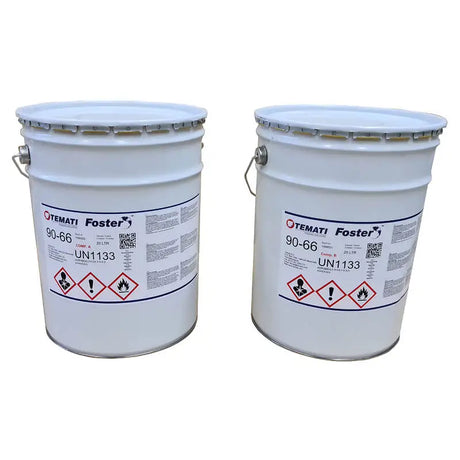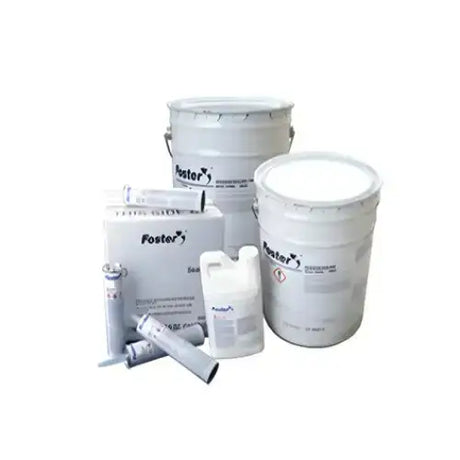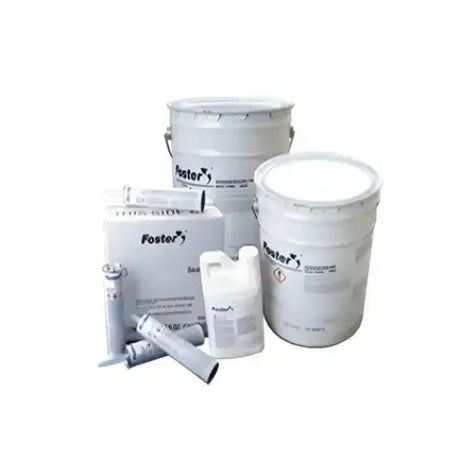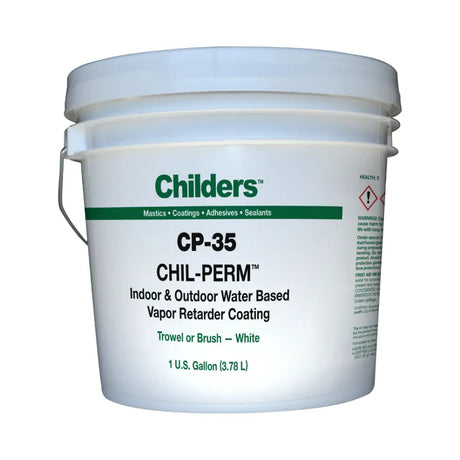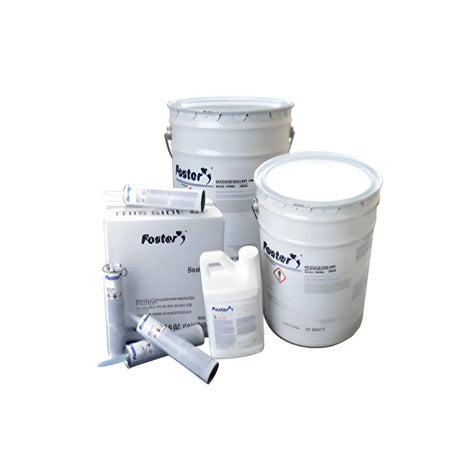Mastics and Energy Efficiency: A Complete Guide
Introduction
When you hear the word "mastics," what springs to mind? For many, it might conjure images of construction sites or the smell of fresh paint. But, would you believe that this sticky substance can play a pivotal role in making your home or office more energy-efficient? Yes, that's right! Mastics are more than just a tool for sealing; they're a critical component in the battle to boost energy efficiency and save on those pesky energy bills. So, pull up a chair, and let's dive into the surprisingly intriguing world of mastics and their role in energy conservation.
Understanding Mastics
Before we get our hands sticky, let's set the scene with a clear picture of what mastics are.
Definition of Mastics
Mastics are a type of viscous material—think of them as the secret agents of sealants. They're used to fill in the nooks and crannies that let air and moisture slip through buildings, much like how a detective would seal off a crime scene.
Types of Mastics
Mastics come in various types, each with its own specialty. You wouldn't use a sledgehammer to crack a nut, would you? Similarly, selecting the right mastic for the job is crucial.
Duct Mastic
Duct mastic is like the superhero of sealants for your ductwork, swooping in to save the day by sealing leaks with a resilience that tape can only dream of.
Roof Mastics
Then, there's roof mastic, which acts as an umbrella for your home, preventing water damage and giving you that "snug as a bug" feeling during a downpour.
Wall Mastics
Wall mastics are the silent guardians, protecting the walls from the stealthy creep of moisture and the unwanted whispers of drafts.
Properties and Characteristics of Mastics
Mastics are like chameleons; they adapt to their environment. They're flexible, durable, and can withstand extreme temperatures. They're the Olympians of the sealant world, with a tenacity to stick to their task come rain or shine.
Role of Mastics in Energy Efficiency
Now, let's talk about why mastics are the unsung heroes of energy efficiency.
Sealing Air Leaks
Imagine your home as a ship. Any leak, no matter how small, can lead to a Titanic-esque fate for your energy bills. Mastics seal those leaks, keeping the warm air in, the cold air out, and your wallet happy.
Improving Insulation
Mastics team up with insulation like fish and chips—a perfect pair. They ensure that your insulation works at peak performance, making sure your home is as cosy as a Sunday roast by the fire.
Reducing Energy Consumption
By plugging leaks and bolstering insulation, mastics help to slash energy consumption. It's like turning off a tap that's been leaking money, drop by drop.
Impact on Indoor Air Quality
Mastics also play a vital role in keeping the air inside your home as fresh as a daisy. By sealing off pollutants and allergens, they help you breathe easier and live healthier.
Benefits of Using Mastics
The perks of using mastics are as plentiful as raindrops in an English summer.
Lower Energy Bills
First and foremost, who doesn't love a bit of extra dosh in their pocket? Mastics can help lower your energy bills, leaving you with more money for a rainy day.
Increased Comfort
Mastics also mean saying goodbye to draughts and hello to consistent temperatures. Your home becomes a veritable oasis of comfort.
Reduced Environmental Impact
By using less energy, you're not just saving money—you're also doing your bit for the planet. It's like planting a tree without getting your hands dirty.
Long-term Cost Savings
Investing in mastics now is like buying an umbrella before the storm hits; it saves you from future headaches and unforeseen expenses.
Applying Mastics for Energy Efficiency
Let's get practical. Applying mastics for energy efficiency isn't rocket science, but it does require a bit of know-how.
Preparation of Surfaces
Before you start, make sure the surface is as clean as a whistle. Any dust or debris can affect the mastic's ability to stick.
Choosing the Right Mastic for Different Applications
It's like choosing the right tea for your mood; you've got to pick the mastic that suits the job. Use our handy guide on types of mastics to make an informed choice.
Application Techniques and Best Practices
Getting the application right is key. Too little and you might as well not bother; too much and you're wasting your resources. Check out our blog post on sealant application techniques for some pro tips.
Best Practices and Tips
To ensure your mastic application is top-notch, here are some best practices to keep in mind.
Proper Storage and Handling of Mastics
Mastics can be a bit finicky when it comes to storage. Keep them in a cool, dry place, much like you would with your treasured bottle of wine.
Safety Precautions
When dealing with chemicals, safety is paramount. Always wear gloves and goggles, because, as the saying goes, "better safe than sorry."
Maintenance and Inspection
Regular check-ups for your mastic applications can prevent a stitch in time from becoming nine. It's like giving your car a regular MOT to keep it purring.
Common Mistakes to Avoid
Even the best of us can slip up, so here are some common faux pas to avoid when using mastics.
Overusing Mastics
Remember, with mastic, less is often more. Using too much is like pouring too much milk into your tea—it just ruins the balance.
Ignoring Proper Application Techniques
Slapping on mastic willy-nilly won't cut it. It's a bit like trying to make a cuppa without boiling the water first—ineffective and a bit of a damp squib.
Using Incorrect Type of Mastic for a Specific Application
This is akin to putting ketchup on your scones instead of jam—it's just not done. Make sure you're using the right mastic for the job.
And with that, we've laid the foundation for understanding mastics and energy efficiency. Stay tuned for the second half of this guide, where we'll delve into regulations, case studies, and wrap up with a neat conclusion.
Regulations and Standards
Navigating the sea of regulations and standards for mastics can be about as straightforward as a hedge maze. But fear not, let's simplify this.
Building Codes and Regulations Related to Mastics
In the UK, building regulations are as important as having a good umbrella on a rainy day. These codes ensure that the mastics used contribute to the overall energy efficiency and safety of buildings. Staying compliant isn't just good practice—it's the law.
Industry Standards for Mastic Application
There's a whole alphabet soup of industry standards out there, from BSI to ISO. Think of them as the recipe for the perfect Victoria sponge—follow them, and you'll get a consistent, quality result every time.
Compliance with Health and Safety Guidelines
Health and safety guidelines are the guardrails that keep you from veering off the path. When using mastics, you'll want to be as attentive to these guidelines as you are to the Queen's Speech on Christmas Day.
Case Studies
Sometimes, talk is cheap, and you need to see the proof in the pudding. Let's look at some real-world examples where mastics have made a significant impact.
Successful Use of Mastics for Energy Efficiency in Commercial Buildings
Imagine a commercial building, as stately as Buckingham Palace, but with the energy bills of a modest cottage. Mastics have made that possible, sealing the building envelope tight as a drum and cutting energy consumption dramatically.
Residential Applications of Mastics for Improved Energy Performance
In homes across the country, from terraced houses to country estates, mastics have been the unsung hero. They've helped homeowners save on their energy bills and stay snug as a bug in a rug all year round. For more insights, have a look at our blog post on energy-efficient fire-resistant coverings.
Conclusion
So, we've come to the end of our journey through the world of mastics and energy efficiency. Let's tie it up with a bow, shall we?
Recap of the Importance of Mastics in Energy Efficiency
Mastics, like a good cup of tea, are essential to the fabric of our buildings. They seal, protect, and insulate, keeping the warmth in and the cold out, and ensuring that energy efficiency is not just a buzzword but a lived reality.
Future Potential and Advancements in Mastic Technology
The future of mastics is as bright as a bank holiday weekend with no rain. With advancements in technology, who knows? We may see mastics that not only seal but also generate energy or change properties based on the weather. The sky's the limit, and the future is as exciting as the final of a cricket match.
In conclusion, mastics are a small but mighty tool in our quest for energy efficiency. They may not get the glory, but without them, our defenses against energy waste would be as flimsy as a paper umbrella. So the next time you feel a draught or see a spike in your energy bills, remember the power of mastics. They might just be the solution you’re looking for, working behind the scenes to keep your home cosy, your air clean, and your wallet full.
And with that, we wrap up this comprehensive guide. Whether you're a DIY enthusiast ready to tackle energy inefficiency head-on, or a professional looking to brush up on the latest in mastic technology, we hope this guide has provided you with valuable insights and practical advice. Remember, the right mastic, applied correctly, can make a world of difference. So grab your caulk gun and let's make energy waste a thing of the past!










